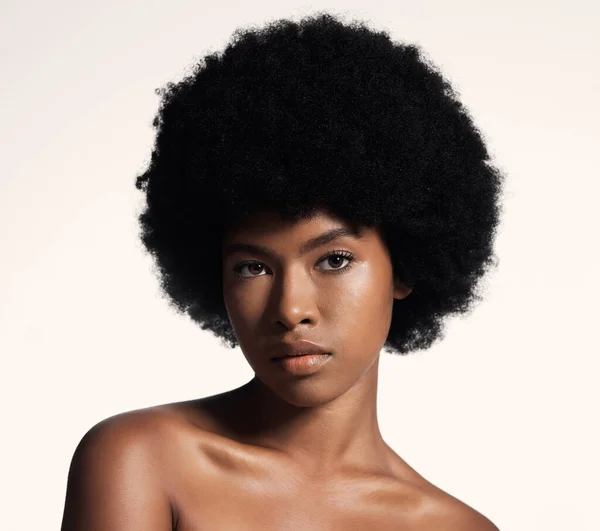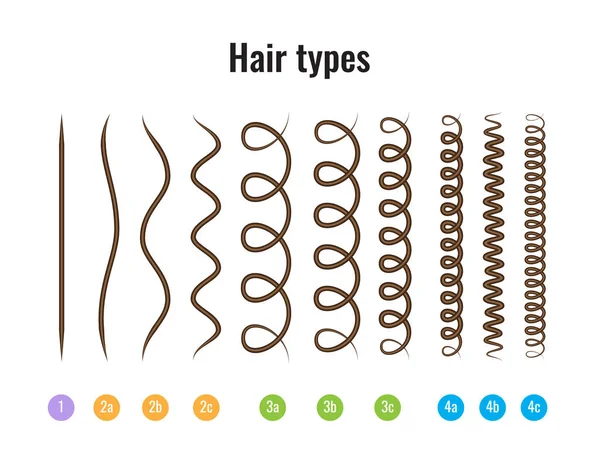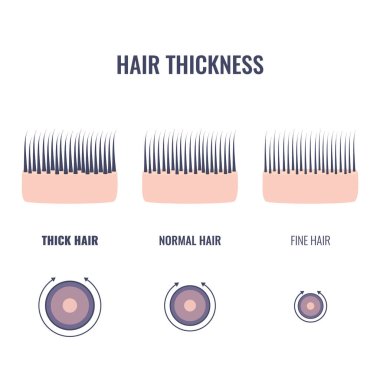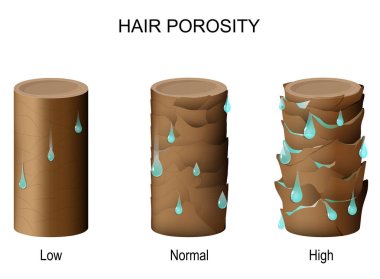What Is 4C Hair Type?: A Complete Guide

What is 4C hair?
Welcome to the ultimate guide on 4C hair! In this journey, we’ll unravel the mysteries surrounding 4C hair, exploring its distinct characteristics, patterns, density, and porosity. Get ready to embrace and understand your beautiful, unique hair texture like never before!
So What Is 4C Hair Type?
So, what’s the deal with 4C hair? It’s got the tightest curls among all the curly hair types, forming springy ringlets that clump together at the ends. And get this – it loves to shrink! In fact, 4C hair can shrink up to a whopping 75% of its length, according to CURLS. Crazy, right?

How To Know If You Have 4C Hair
1. Curl Pattern Recognition:
Start by understanding your curl pattern. 4C hair typically forms tight, small curls or coils. These curls may appear more densely packed, creating a stunning natural texture. Embrace the beauty of these tight coils that contribute to the uniqueness of your hair.

Tip: Take a clean strand of your hair and wet it. Allow the strand to air-dry or gently pat it dry with a towel. Observe how the strand curls as it dries. If your hair forms tight, small curls or coils, it may indicate a 4C curl pattern.
2. Shrinkage Awareness:
4C hair is notorious for its shrinkage tendency. If you notice your hair appearing significantly shorter than its actual length, especially when dry, you’re likely dealing with shrinkage. Embrace this characteristic by experimenting with styles that showcase both the shrunken and stretched looks.
3. Texture Variations:
4C hair can vary in texture, even within the same head of hair. Some areas might have a softer feel, while others may feel denser and coarser. Embrace these variations by customizing your hair care routine to address the specific needs of different sections of your hair.
4C Hair Density
One important aspect of 4C hair that is often overlooked is its density. Understanding your hair’s density can help you determine the best products and styling techniques to keep your hair healthy and flourishing.
In this section, we will explore what 4C hair density means, how to determine your hair’s density and tips for caring for your specific hair type.
Understanding 4C Hair Density
Hair density refers to the number of hair strands per square inch on your scalp. It determines how full or sparse your hair appears.
4C hair is known for its dense nature, which means there are a high number of hair strands on the scalp. This density gives 4C hair its voluminous and full appearance.
However, with great density comes great responsibility. 4C hair requires extra care and attention to prevent breakage and maintain its health.

Differentiating Between Thick and Thin Hair
When discussing hair density, it’s important to differentiate between thick and thin hair. Thick hair refers to a high number of hair strands per square inch, while thin hair refers to a lower number of hair strands. Understanding whether you have thick or thin hair can help you make informed decisions when it comes to styling and product selection.
The Impact of Hair Density on Styling
Hair density plays a crucial role in the styling process. The density of 4C hair can affect how certain styles look and how long they last. With its dense nature, 4C hair can create stunning voluminous styles, such as afros and twist-outs.
However, it can also make it challenging to achieve sleek and defined styles, as the density can cause the hair to shrink and coil tightly.
When styling 4C hair, it’s important to consider the density and texture of your hair. Using lightweight products and avoiding heavy creams and gels can help prevent your hair from becoming weighed down and losing its natural volume.
Additionally, opting for styles that work with your hair’s density, such as protective styles like braids or twists, can help reduce manipulation and promote hair health.
Determining Your 4C Hair Density
Now that you understand the importance of hair density, let’s explore how to determine your 4C hair’s density. There are a few simple methods you can use to assess your hair’s density and gain a better understanding of its unique characteristics.

1. Visual Assessment
One of the easiest ways to determine your hair’s density is through a visual assessment. Start by standing in front of a mirror in a well-lit area.
Part your hair down the middle and observe your scalp. If your scalp is clearly visible and you can see a significant amount of scalp between each hair strand, you likely have thin-density hair. On the other hand, if your scalp is barely visible or not visible at all, you have thick-density hair.
2. Ponytail Test
Another method to determine your hair’s density is the ponytail test. Start by gathering all your hair into a ponytail at the center of your head. Take note of the circumference of your ponytail. If your ponytail is small and thin, you likely have thin-density hair. However, if your ponytail is thick and full, your hair is most likely of thick density.
Remember that hair density can vary throughout your scalp, so it’s possible to have different densities in different areas of your head. Pay attention to any variations in density and adjust your hair care routine accordingly.
4C Hair porosity
Understanding the porosity of your 4C hair is crucial for tailoring an effective hair care routine. Porosity refers to your hair’s ability to absorb and retain moisture. Here’s a brief overview of 4C hair porosity:
Porosity Levels:
- Low Porosity: 4C hair with low porosity has a more compact cuticle layer, making it resistant to moisture absorption. This type may require more time and effort to moisturize effectively.
- High Porosity: High porosity 4C hair has a more open cuticle, allowing it to absorb moisture quickly. However, it may struggle to retain that moisture for an extended period, requiring consistent hydration.

Porosity and Moisture Management:
- Low Porosity Care: Use lightweight, liquid-based products and incorporate heat when deep conditioning to open the cuticle. Regular clarifying can prevent product buildup that hinders moisture absorption.
- High Porosity Care: Seal in moisture with heavier products like creams and butters. Protein treatments can help strengthen the hair, reducing porosity. Regular trims minimize damage.
Understanding your 4C hair’s porosity allows you to choose products and techniques that cater to its unique needs, ensuring optimal moisture balance and overall hair health.
Caring for 4C Hair
Now that you have a better understanding of your 4C hair, it’s time to explore how to care for your 4C hair and keep it healthy and thriving. Here are some essential tips for maintaining and nourishing your hair’s density:
1. Moisturize Regularly
Moisture is key when it comes to caring for 4C hair. Due to its tight coils, 4C hair is prone to dryness, which can lead to breakage. Invest in a good moisturizing routine that includes hydrating shampoos, conditioners, and leave-in conditioners. Look for products that are specifically formulated for 4C hair and contain moisturizing ingredients such as shea butter, coconut oil, and aloe vera.
2. Seal in Moisture
After moisturizing, it’s important to seal in that moisture to prevent it from escaping. Use natural oils, such as jojoba oil or argan oil, to seal the moisture into your hair strands. Apply a small amount of oil to your hair after moisturizing, focusing on the ends and any dry areas. This will help keep your hair hydrated and reduce the risk of breakage.

3. Protective Styling
Protective styling is a great way to give your 4C hair a break from manipulation and reduce the risk of breakage. Braids, twists, buns, and updos are all excellent protective styles that can help preserve the health and length of your hair. When opting for protective styles, be mindful of the tension applied to your hair and avoid styles that are too tight or heavy, as they can lead to hair loss or breakage.
4. Avoid Heat Damage
Heat styling tools can cause significant damage to 4C hair. Excessive heat can strip your hair of its natural moisture, making it more prone to dryness and breakage. Minimize the use of heat styling tools such as flat irons and curling wands, and always use a heat protectant spray or serum before applying heat to your hair. Embrace your natural texture and explore heat-free styling options to keep your hair healthy and vibrant.
5. Regular Trims

Trimming your hair regularly is essential for maintaining healthy 4C hair. Split ends and breakage can hinder hair growth and give the appearance of thinning hair. Schedule regular trims every 3-4 months to remove damaged ends and promote healthy hair growth. A professional stylist can help you determine the best trimming schedule based on your hair’s needs.
Conclusion
Understanding your 4C hair is key to effectively caring for and styling your hair. By determining your hair’s density and porosity, you can tailor your hair care routine and styling techniques to meet its unique needs.
Whether you have thick or thin-density hair, high or low porosity hair, prioritizing moisture, protective styling, and avoiding heat damage will help you maintain healthy and flourishing 4C hair.
Remember, every individual’s hair is unique, and what works for one person may not work for another. Experiment, listen to your hair’s needs, and consult with professionals or trusted sources for personalized advice. With the right care and attention, your 4C hair can thrive and be a source of pride and confidence.

